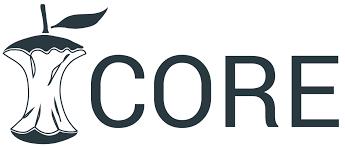Hybrid Optimized Feature Selection and Deep Learning Method for Emotion Recognition That Uses EEG Data
DOI:
https://doi.org/10.25195/ijci.v51i1.545Keywords:
: : Human Interaction, Gated Recurrent Unit (GRU), Electroencephalogram (EEG), Recurrent Neural Networks (RNN) , Emotion Identification, Long Short-Term Memory (LSTM) , Particle Swarm Optimization (PSO).Abstract
Introduction: This study represents an important development in human–machine interactions. It aims to utilize the potential of electroencephalograms (EEGs) in recognizing emotions, which is a complex and variable task. This study presents a complete framework for enhancing emotion identification. It provides an intuitive way for humans to interact with machines emotionally by understanding the emotion machine. The process begins with collecting and preprocessing EEG information to use the data for training and testing the proposed system. Optimization, machine learning, and deep learning algorithms are applied in this study. First, particle swarm optimization (PSO) identifies and optimizes critical functions and reduces feature dimensionality. Thereafter, long short-term memory (LSTM), gated recurrent unit (GRU), and simple recurrent neural network (RNN) architectures are used in emotion identification. All the applied models are evaluated using common evaluation metrics, such as accuracy, precision, and the F1 score. From various implementations of the different models applied to identify EEG emotion, the LSTM model achieved good results with an accuracy of 98.13%, a precision of 98.15%, and an F1 score of 98.13%. Although the GRU and simple RNN models exhibit good performance in emotion identification, their measurements are less than those of LSTM, which outperforms all the other models. This study incorporates the concepts of the PSO algorithm into a feature selection and deep learning model by using LSTM to enhance EEG emotion identification. The proposed model overcomes difficulties and issues related to EEG signals, leading to an accurate emotion detection system and providing enhanced machine understanding of human–machine interactions.
Downloads
Downloads
Published
Issue
Section
License
Copyright (c) 2024 Iraqi Journal for Computers and Informatics

This work is licensed under a Creative Commons Attribution-NonCommercial-NoDerivatives 4.0 International License.
IJCI applies the Creative Commons Attribution (CC BY) license to articles. The author of the submitted paper for publication by IJCI has the CC BY license. Under this Open Access license, the author gives an agreement to any author to reuse the article in whole or part for any purpose, even for commercial purposes. Anyone may copy, distribute, or reuse the content as long as the author and source are properly cited. This facility helps in re-use and ensures that journal content is available for the needs of research.
If the manuscript contains photos, images, figures, tables, audio files, videos, etc., that the author or the co-authors do not own, IJCI will require the author to provide the journal with proof that the owner of that content has given the author written permission to use it, and the owner has approved that the CC BY license being applied to content. IJCI provides a form that the author can use to ask for permission from the owner. If the author does not have owner permission, IJCI will ask the author to remove that content and/or replace it with other content that the author owns or has such permission to use.
Many authors assume that if they previously published a paper through another publisher, they have the right to reuse that content in their PLOS paper, but that is not necessarily the case – it depends on the license that covers the other paper. The author must ascertain the rights he/she has of a specific license (a license that enables the author to use the content). The author must obtain written permission from the publisher to use the content in the IJCI paper. The author should not include any content in her/his IJCI paper without having the right to use it, and always give proper attribution.
The accompanying submitted data should be stated with licensing policies, the policies should not be more restrictive than CC BY.
IJCI has the right to remove photos, captures, images, figures, tables, illustrations, audio, and video files, from a paper before or after publication, if these contents were included in the author's paper without permission from the owner of the content.











